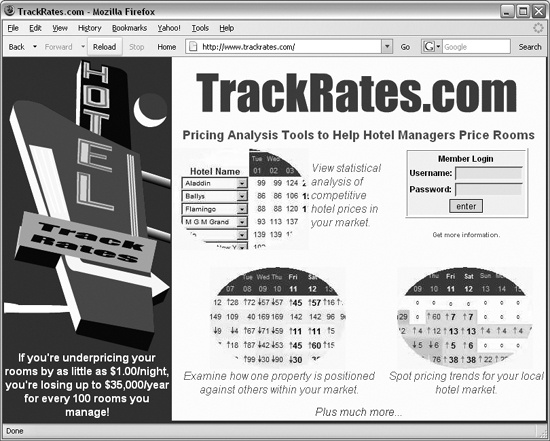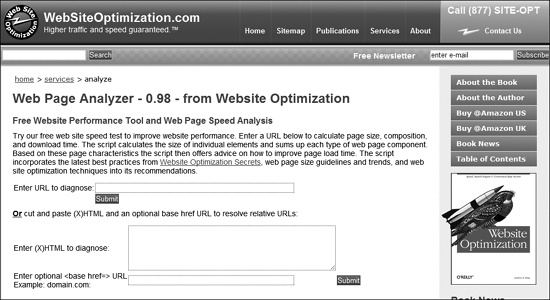It’s often more difficult to find applications for new technology than it is to learn the technology itself. Therefore, this chapter focuses on encouraging you to generate ideas for things that you can do with webbots. We’ll explore how webbots capitalize on browser limitations, and we’ll see a few examples of what people are currently doing with webbots. We’ll wrap up by throwing out some wild ideas that might help you expand your expectations of what can be done online.
A useful method for generating ideas for webbot projects is to study what cannot be done by simply pointing a browser at a typical website. You know that browsers, used in traditional ways, cannot automate your Internet experience. For example, they have these limitations:
Browsers cannot aggregate and filter information for relevance.
Browsers cannot interpret what they find online.
Browsers cannot act on your behalf.
However, a browser may leverage the power of a webbot to do many things that it could not do alone. Let’s look at some real-life examples of how browser limitations were leveraged into actual webbot projects.
TrackRates.com (http://www.trackrates.com, shown in Figure 2-1) is a website that deploys an army of webbots to aggregate and filter hotel room prices from travel websites. By identifying room prices for specific hotels for specific dates, it determines the actual market value for rooms up to three months into the future. This information helps hotel managers intelligently price rooms by specifically knowing what the competition is charging for similar rooms. TrackRates.com also reveals market trends by performing statistical analysis on room prices, and it tries to determine periods of high demand by indicating dates on which hotels have booked all of their rooms.
I wrote TrackRates.com to help hotel managers analyze local markets and provide facts for setting room prices. Without the TrackRates.com webbot, hotel managers either need to guess what their rooms are worth, rely on less current information about their local hotel market, or go through the arduous task of manually collecting this data.
WebSiteOptimization.com (http://www.websiteoptimization.com) uses a webbot to help web developers create websites that use resources effectively. This webbot accepts a web page’s URL (as shown in Figure 2-2) and analyzes how each graphic, CSS, and JavaScript file is used by the web page. In the interest of full disclosure, I should mention that I wrote the backend for this web page analyzer.
The WebSiteOptimization.com webbot analyzes the data it collects and offers suggestions for optimizing website performance. Without this tool, developers would have to manually parse through their HTML code to determine which files are required by web pages, how much bandwidth they are using, and how the organization of the web page affects its performance.
Pokerbots, webbots that play online poker, are a response to the recent growth in online gambling sites, particularly gaming sites with live poker rooms. While the action in these pokers sites is live, not all the players are. Some online poker players are webbots, like Poker Robot, shown in Figure 2-3.
Webbots designed to play online poker not only know the rules of Texas hold ’em but use predetermined business rules to expertly read how others play. They use this information to hold, fold, or bet appropriately. Reportedly, these automated players can very effectively pick the pockets of new and inexperienced poker players. Some collusion webbots even allow one virtual player to play multiple hands at the same table, while making it look like a separate person is playing each hand. Imagine playing against a group of people who not only know each other’s cards, but hold, fold, and bet against you as a team!
Obviously, such webbots that play expert poker (and cheat) provide a tremendous advantage. Nobody knows exactly how prevalent pokerbots are, but they have created a market for anti-pokerbot software.


